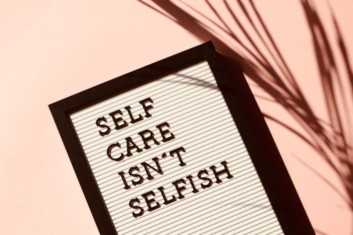“People are stressed, both at home and at work, and there needs to be a different level of dialogue around the importance of wellbeing. We need to create a space where people are talking about mental health — whether that means more education around the topic in group discussions or making sure everyone feels comfortable having one-on-one conversations with their leaders or peers. We’re getting closer to where we need to be, but as a society, there’s more work we need to do to fully normalize this topic.” — Stephen Shea, EY Managing Partner, Talent
It’s never been easy being in HR.
Before COVID-19, HR wore a lot of hats and was at the forefront of policies set by leadership. The uncertainty of COVID-19 has not only threatened health and economy, but also your organization and employees. After COVID-19, HR continues to be challenged and in need to adapt to the new workplace landscape while retaining its top employees.
Employees have never been more stressed – the “Echo pandemic” to workforce mental health is upon us for the past year.
According to Starling’s data, collected from over 4000+ members within our COVID-19 program:
- COVID-19 has deeply impacted 79% of people’s lives
- In some professions like educators and healthcare workers, 60% say their anxiety has increased significantly
- 45% say this is due to: Major life-altering changes and disruptions (i.e. reduced hours, partner job loss, health concerns) and struggling with a lot of uncertainty
Despite the steady rise in employee mental health conditions:
- 50% will not get the mental health support they need to be resilient and healthy at work
- 65% doesn’t feel their workplace offers benefits or programs will support them
HR professionals are trying to keep up with all the changes while keeping their business plans and strategies aligned, but it’s not easy. Leaders continue to be in crisis response mode, dealing with employee engagement as they work to monitor the impacts of work-from-home policies.
The top challenges faced by top HR experts as they deal with as a result of the COVID-19 pandemic include:
- Pace of Workforce Changes
- Managing Information and Misinformation
- Being Responsive to Employee Needs
- Balancing Employee Wellbeing and Customer Experience
- Job Workload and New Stresses
Pace of Workforce Changes
For working HR leaders today, COVID-19 was an unprecedented global event that continues to persist. In the midst of contingency, resource, and scenario planning, HR policies were constantly getting revised to keep up with the latest practices to combat the long-term impacts of COVID-19, both physically and mentally.
“There was a lot of work being done, but everything could change the next day and you may need to throw away all your work out the window. There was really no blueprint, and we are making up new policies as we go, trying to figure out what’s best for our organization and employees. In the midst of contingency and resource planning, we are also dealing with the vast array of employee emotions and personal reactions.” — Shiah Bazeley, VP of People and Culture, Daiya Foods
“The biggest challenge is transitioning and maintaining employee wellness and team culture despite remote working conditions. The technology may have been in place, but organizations rely on a culture of teaming, which was based on collaboration, inner interaction, physical interaction, etc.” — Stephen Shea, EY Managing Partner, Talent
Managing Information and Misinformation
With the sheer volume of information at your fingertips, managing information, fake news, grapevine gossip, and myths became a critical part of helping employees navigate the uncertainty they were all feeling then, now, and beyond COVID-19. Many HR leaders received floods of emails from concerned employees in the middle of the night, asking questions that you don’t have the answers to. It’s a difficult position to be in as employees often look to their HR and leadership for clarity and guidance.
“I would wake up to emails with employees saying they were scared to come into work, but had to in order to make money. It was hard to manage. An employee would read a Facebook post about a local mall outbreak and would be scared to work because one of their colleague’s husbands works there. So we also have to manage a lot of gossip on top of everything else.” – Shiah Bazeley, VP of People and Culture, Daiya Foods
FACT: Starling Minds found that usage in our mental health platform increased by almost three-fold during COVID-19, with engagement spiking in the morning and early afternoon.
Being Responsive to Employee Needs
For many organizations delivering essential services, it was critical to develop responsive, practical, and smart policies to ensure employees were physically and psychologically safe in the workplace, during and after the pandemic. But it was challenging as employee and customer reactions were mostly unpredictable, and information about new variants continued to evolve and change.
“At the beginning of the lockdown, we had a customer who recently came back from Mexico and he needed to do some banking. We had signage everywhere saying, “Don’t come in if you’ve been outside of Canada.” This member proceeded to tell our service advisor that they would be quick and it was no big deal. Our employee was terrified and felt threatened for their own safety, but wanted to help the customer. So, being responsive with your policies throughout all phases of the pandemic is critical in resolving that situation, making employees feel safe and certain; having senior leadership on the ground to help make a huge difference. — Brieann Spencer, Senior Leadership and Learning Advisor, First West Credit Union
Balancing Employee Wellbeing and Customer Experience
Before COVID-19, smart business practices revolved around how to create exceptional customer experiences. But with COVID-19, priorities constantly shifted to try and balance the needs of employees and customers which can be hard for leaders to do. Without exceptional customer services and practices, customers may leave but it may cost you your best employees in the long run. Smart businesses try and revise their workforce policies to support employee wellbeing, but it would take leadership to help drive up adoption, again difficult when many people are working from home.
“During the beginning of the lockdown, many of our customers needed us to digitize a lot of their processes, but it opened up a whole new can of worms. It wasn’t about, “Do we have work?”. It was like, “How do we manage every day so we’re not putting in 24 hours a day because we are sacrificing ourselves for our customers.” – Manu Varma, VP of People and Culture, Traction on Demand
Job Workload and New Stresses
As an HR professional, you’ve dealt with people who have had these life-changing events before, but you’ve never dealt with the entire group for a long period of time. You take it on yourself to help as many employees as you can, but with a vast array of employee emotions, responses, and circumstances it’s hard to keep up on top of drafting new workplace policies while maintaining existing processes – especially after two years. Given the role of HR within an organization, you have the added pressure of taking the latest information available and packaging it up for employee communication.
FACT: Starling Minds found that 75% of HR people were significantly impacted by COVID-19 due to the workload they had to take on, the responsibility to lead employees through uncertainty, and dealing with uncertainty yourself.
With the help of leading HR experts, here is a list of insights and strategies to help you gain the knowledge you’ll need to accelerate your business recovery plans, through the lens of better employee mental health, productivity, and engagement.
Connect with Employees
- Ask Meaningful Open-Ended Questions: Use open-ended versus closed-ended questions or perhaps a rating scale type of question to have deeper conversations with employees. Ask meaningful questions such as “How are you coping right now?”, “What are the biggest stressors right now?”, “How can we make it easier for you to work safely in this current environment?”
- Know Your Resources: Connection is about knowing the resources that are available for support. The key is to ensure that access to these resources and supports is easy for employees to find without having to ask for it.
- Listen to Understand, Not Respond: Give people the time and space to feel and speak. Approach conversations with compassion, empathy and vulnerability – none of us have navigated a pandemic like this before, so no one expects you to know everything – the role of a leader is to show up, seek to understand each individual’s unique circumstance (i.e. suspend judgement and reserve statements like “I think”). Let employees tell you what they need, and respond with empathy and compassion.
- Talk about it: Create a safe space and foster an environment where employees feel comfortable talking about their mental health with leaders. Make sure employees know that their wellbeing is a priority. It’s more than just pushing resources — humanize the conversations around wellbeing. The main thing is to get the dialogue out at all levels of the organization, and everybody from the top to the bottom.
- Create time and space: Many employees will prioritize their job and responsibilities over self-care, therefore it will be important for leaders to create the time and space for employees to get the mental health support they need to stay or improve their resilience. It starts with leaders feeling empowered and enabled to create that time and space first.
- Understand diverse perspectives: The best leaders can put themselves into the shoes of their team members and recognize the hardships they face. Be empathetic, understand and appreciate diverse perspectives when making decisions for employees. Sensitivity training can be a good investment for people leaders.
- Model self-care: When leaders model self-care, this will encourage employees to do the same and give them the “permission” to make and take the time to manage their physical and/or mental health support. This is critical for employees to succeed in their roles and drive outcomes for their respective departments.
Organization-Wide Policies and Processes
- Corporate Guiding Principles: To help guide employees through times of uncertainty, it would be important for you to put guiding principles together that are based on your organization’s values. This will help guide an organization and employees throughout all circumstances, irrespective of changes in its goals, strategies or type of work. Due to the high level of uncertainty employees experience, any opportunity for organizations to bring more certainty into their lives the better.
- Constant and Transparent Communications: The best HR leaders know the power of informal communication among employees (i.e. water cooler, grapevine talk) and the importance of maintaining two-way communication that is consistent and transparent. No matter what, gossip will start and it’s up to HR and internal communications to stay on top of employee concerns and manage rumours. Social media sites like Glassdoor should be monitored to further address employee rumours and myths.
- Employee Check-Ins and Surveys: Empower leaders and managers to check-in on their teams to ensure they have the support they need. On an organization level, be sure to gauge employee feedback via surveys, town halls, and face-to-face comments to understand their latest concerns and address them accordingly. It will be critical to not assume all employees will have the same concerns.
- Build Decisions around Data: Track employee sentiments in real-time. Not all mental health support programs will report on insights happening within their employee population, but if you do be sure to leverage its data to make better-informed decisions around your employee mental health programs and policies. No two organizations operate the same and each have unique job stressors, therefore it would be critical to really hone in on what employees are concerned about and how they wish to be supported. For example, Starling Minds had shared that between the hours of 10 pm and 5 am – program usage spiked meaning employees are struggling with sleep disorders. Organizations can take that insight and educate employees on resources available to help them sleep better.
- Accessible Employee Wellness Programs: It’s critical to understand what’s most relevant to your employees’ overall wellbeing. Offer meaningful mental health resources that allow them to take care of themselves and their families. It’s challenging to get employees to prioritize their mental health, likely due to stigma, costs, and wait times. As such, it would be important for your employees to know about the resources and support available to them, and that they are easily accessible. The rise in digital mental health platforms like Starling Minds will be the answer to break down the greatest barriers to providing the mental healthcare your employees need, easily, readily, and immediately.
- Don’t Be Afraid of Setting Precedence: It’s perfectly appropriate to use the “this is a global pandemic” card when setting your new HR policies and processes. Oftentimes, organizations will implement new policies to manage the small percentage of employees who may abuse the system; however, that notion should not stop you from doing what is right for your employees. Likely, when employees see their employer doing the right thing by them, they will respect and appreciate it.
Last Thoughts
We know that what may work for certain organizations may not work for you. So, HR leaders will need to assess what their workforce’s key stressors continue to be, what resources they need to support employees physically and mentally in our post-pandemic world, and to look for resources that are missing to combat some of the mental, physical, and emotional pain employees are struggling with.
It’s a lot to take on but Starling can help with this. Our mental health programs are designed to help you identify what employees are struggling with and to build up their resilience so they know how to manage their mental health effectively.
We know many organizations and HR leaders are worried for their employees. But if there was one thing People leaders have learned is how important it is to have resources in place to ease the stress, anxiety, and depression employees may feel given what they’ve experienced due to COVID-19.
We’ve often heard that employees are your greatest assets, but it’s actually your best employees who are your greatest assets. They are only the best because they have the resilience to withstand the stress and anxiety thrown at them; however many won’t be able to outpace burnout without the support and it’s up to their employers to deliver that to them.
“We’ve been talking about psychological health and safety for years. This includes building resilient teams, developing psychologically safe leaders and providing a positive organizational culture. Many recognized that if we support the mental health of our employees, we can maximize organizational effectiveness. This pandemic has made this clear to many more” – Mary Ann Baynton, Director of Strategy and Collaboration, Workplace Strategies for Mental Health
Are you interested in our programs?
Learn more about our online CBT platform that delivers up to 40% in user engagement and 77% in lowered stress, anxiety, and depression scores in employees.




